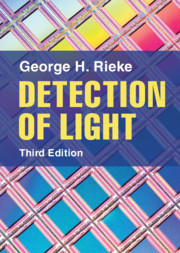Crossref Citations
This Book has been
cited by the following publications. This list is generated based on data provided by Crossref.
Wang, Yazhong
Kublitski, Jonas
Xing, Shen
Dollinger, Felix
Spoltore, Donato
Benduhn, Johannes
and
Leo, Karl
2022.
Narrowband organic photodetectors – towards miniaturized, spectroscopic sensing.
Materials Horizons,
Vol. 9,
Issue. 1,
p.
220.
Mrnka, Michal
Penketh, Harry
Hooper, Ian R.
Saxena, Sonal
Grant, Nicholas E.
Murphy, John D.
Phillips, David B.
Hendry, Euan
Jarrahi, Mona
Turchinovich, Dmitry
and
Preu, Sascha
2024.
Computational terahertz imaging via spatio-temporal emissivity modulation.
p.
32.
Bhattacharya, Saunak
Kundu, Abhijit
Nair, Shajith D.
Chakraborty, Anna
Sarkar, Angsuman
and
Mukherjee, Moumita
2024.
Design and analysis of photo-electrical characteristics of graphene/Si-nanowire photo-detector: a potential photo-detector for applications in IR detection.
Microsystem Technologies,
Hu, Mingzhong
Zheng, Jingyuan
Cui, Kaiyu
Zhang, Wei
and
Huang, Yidong
2024.
Photon-Counting Spectrometers Based on Superconducting Nanowire Single-Photon Detectors.
Electromagnetic Science,
Vol. 2,
Issue. 3,
p.
1.



